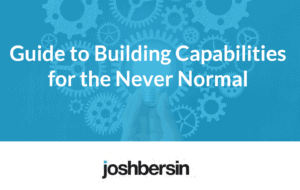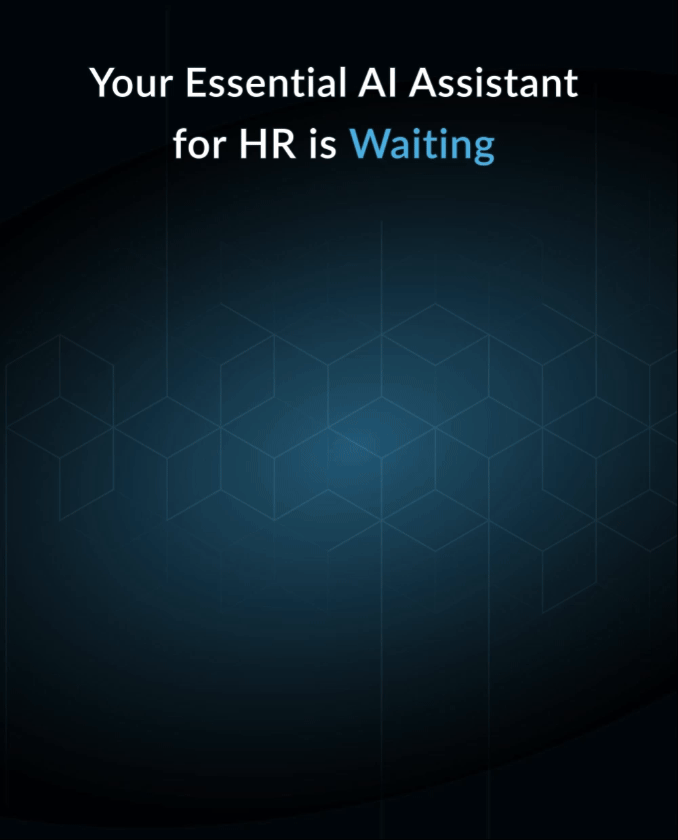What Is A Capability Academy? Here’s The Answer.
Almost two years ago I started describing what I call a Capability Academy, and the concept has really picked up speed. Well we just published a whole research report on the topic, and in this topic I’ll give you some specific examples.
First, most companies have over-rotated toward skills. Of course we all need skills to do our jobs well, but this is really nothing new. I entered the workforce in 1978 and I’ve been developing technical, professional, and business skills ever since. It’s a never-ending part of your career.
 Our research shows that there are three “types” of skills in business: technical, professional, and soft skills (which I call PowerSkills).
Our research shows that there are three “types” of skills in business: technical, professional, and soft skills (which I call PowerSkills).
- Technical skills include hundreds of technologies, topics, systems, and processes. We all need to know how to type, read, use Excel, and even write code. These technical skills are broad and deep, and they are always changing. Lots of research shows that technical experts “top out” in their careers early, so even tech professionals have to constantly refresh their technical skills. And if you work in pharmaceuticals, energy, manufacturing, accounting, or other industries there are hundreds of technical skills required to do your job.
- Professional skills are the things your profession demands. If you’re an HR professional, for example, you better learn how to interview people, recruit, create performance plans, and many other domain-specific things. We identified 94 of these professional skills in our Global HR Capability Project, and each is complicated in its own way. Consider “Employment Branding,” for example. It requires skills in marketing, communications, SEO, analytics, and lots of other things – all applied toward a particular professional problem.
- Power skills (or soft skills) are all the human, relationship, teamwork, and leadership skills we need. This ranges from listening and communications (the #1 most in-demand skill), to leading teams, empathy, patience, inspiration, and dozens more.
When you study this topic, you quickly find that all three of these areas are essential, and over time we build these skills in a contextual way. We learn them by doing things, not just by studying. You can go to a course in Java or Leadership and feel good when you’re done, but you don’t really know how to program or lead until you’ve done it. And that means you need projects, feedback, mentors, coaches, and lots of stretch assignments.
In a company, this means lots of “learning by doing.” So no matter how good the L&D department is, nobody really learns much until managers and career coaches help you “do” and “learn” on the job. And this has been the core of my research on Learning in the Flow of Work.
In my case I learn something every day. Yes, every single day. I listen to others, attempt to drive projects, make decisions – and every day I learn something new. So I’m building “capability” all the time.
So how do you develop, facilitate, and support this process in a structured, directed way? Enter the Capability Academy.
Defining A Capability Academy
Rather than build a course catalog or a “University” of training, a Capability Academy is focused on… yes.. building capabilities. The two best examples of these are Sales Academies and Leadership Academies.
A Sales Academy is usually run by the head of sales (not the head of L&D) and there is a senior sales executive who runs it. He or she puts together all sorts of curricula, programs, simulations, and ongoing events to make sure salespeople are always ready to sell. He or she probably looks at new hire training, product training, sales skills, negotiation skills, and all sorts of industry and solution skills.
Ericsson, for example, has built an entire 5G Academy for its sales and engineering teams. 5G is not just a stack of technologies: it’s new business models, new application solutions, and a whole new way of positioning what Ericsson does. So your Sales Academy has to include tenure-based programs, assignments, and even peer-based assessment. Cisco used to force sales leaders to be “credentialed” by their peers to reach a senior level.
Great leadership academies are similar. They aren’t just a few courses for managers or leaders. They include all sorts of external speakers, industry education, simulations, case studies, and self-assessment. And as anyone who runs leadership development knows, the process is built on succession management, developmental assignments, and lots of job rotation. All that falls into the Academy structure.
Our Academy (The Josh Bersin Academy), is also a great example. We did start with a series of courses, but then we added research, assessments, a capability model, and now a whole set of Senior Faculty and developmental journeys. Soon we’ll be adding developmental assignments and all sorts of other activities for your HR organization. All with the goal of continuously building deeper, relevant, useful capabilities in the important work of human resources.
(Read about the HR Capability Project here.)
How Do You Get Started
As the research points out, a Capability Academy is not a library of courses. It’s a capability-centric organization that should be led by a business leader, not an L&D professional. When Capital One got started with cloud-based digital technologies they assigned the CIO to lead their Digital Academy. He worked with one of the senior L&D leaders to build out the curricula, developmental assignments, and investments in content.
When Cemex built its Safety Academy or Supply Chain Academy, they partnered with the CEO and heads of operations. When Pepsi built its Finance Academy, the CFO was the sponsor. You get the idea: this is your opportunity to make a strategic decision about what capabilities really matter, and focus your attention in these areas.
You shouldn’t build a Capability Academy for everything. All companies need training in compliance, diversity, operations, and management. These may or may not warrant an Academy structure. As I like to put it, draw a 2X2 grid and figure out what capability areas drive competitive advantage for your company.
The following chart will help. This is an analysis I developed years ago when I wrote The Training Measurement Book, and it still applies today. Look at the capability areas that are strategic (they drive competitive advantage), unique (they’re not just off-the-shelf topics), and urgent (if you don’t address them now your company won’t grow).
 |
This 2X2 is a good exercise for any L&D or HR team. Take all your L&D programs, from onboarding to DEI to compliance, and see where they fit. And what you’ll find is that you can “outsource” a lot of the ones at the bottom left and bottom right, and they may or may not justify an Academy. That leaves your budget to focus on the most strategic areas of all.
Long ago I spent a lot of time at Caterpillar, and one of their most important capability areas was channel partners. They, like many manufacturers, make most of their money by training, supporting, and developing their resellers, distributors, and partners. So they have always had an “Academy” structure for channel sales and support.
Bottom Line: Skills Are Not The Whole Answer
I know everyone is interested in skills taxonomies and intelligent AI-based skills systems. And even if they worked perfectly, all they’d do is recommend the “perfect training” for every employee at a given time. But would they build capabilities? Likely not. It’s the experience, exposure, coaching, and feedback that help people grow. The Academy gives you the structure to do this well.
We have become quite experts at putting these strategies together. If you’d like some help figuring out your Capability Academy strategy, please give us a call.
Additional Resources
Guide To Building Capabilities For The Never Normal
Demystifying The Learning Record Store: A Critical New Learning Technology
The Academy at Bank of America (one of the best Capability Academies I’ve seen!)
Understanding SkillsTech: One Of The Biggest Markets In Business
